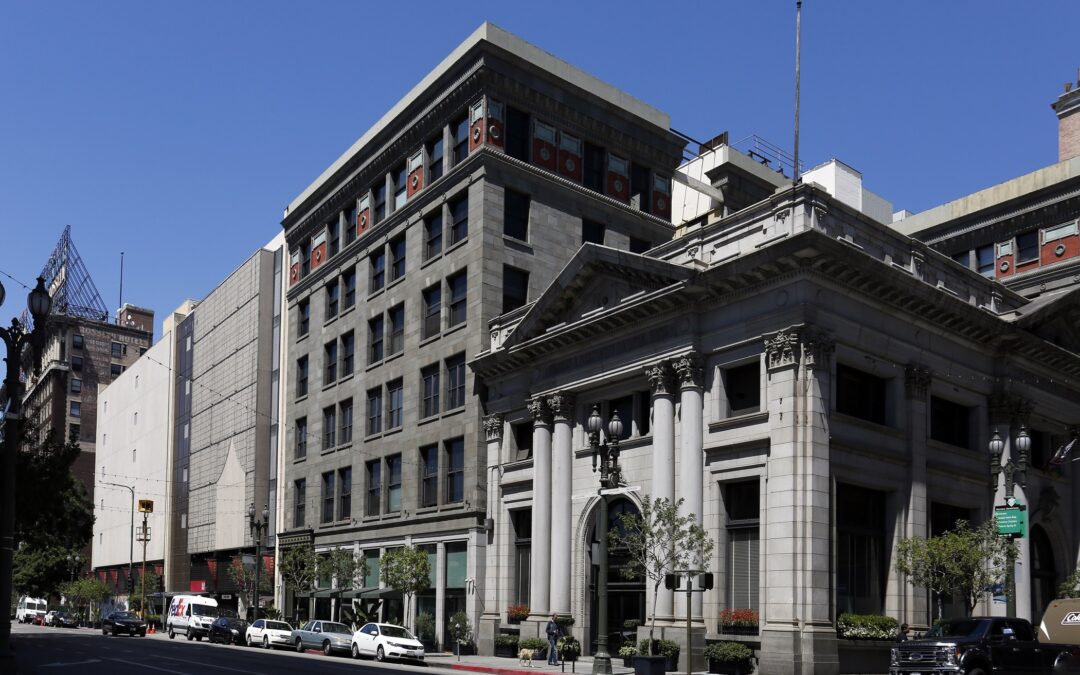A Los Angeles ordinance that has a track record of creating downtown housing may be extended in coming months as the nation’s second-largest city grapples with a worsening housing affordability crisis.
The city’s planning department has proposed expanding its adaptive reuse ordinance to encourage underutilized buildings to become new housing, according to city documents. Real estate investors and developers are watching how the ordinance unfolds because it may create more residential construction opportunities in a city that has long put up obstacles to more homebuilding.
The ordinance is part of a number of strategies that are expected to be adopted over the next year to encourage more home construction in Los Angeles, according to the city’s website. Los Angeles is one of the most unaffordable cities to live in America because of a lack of supply that has led to soaring rents, overcrowded conditions and housing instability in general.
The city’s planning department currently is fielding comments as it gears up for public meetings about the ordinance, Blair Smith, senior city planner, told CoStar News in an email. The ordinance ultimately will need city council approval for adoption.
The proposed ordinance calls for expanding incentives to convert buildings that are at least 15 years old into housing, according to city documents. A similar ordinance has been in place since 1999 but has been limited to older buildings in downtown Los Angeles. Projects that meet the adaptive reuse ordinance requirements may be eligible for a by-right approval process which will speed up approvals.
Currently, it takes nearly a full presidential term to secure approvals and build new housing in L.A.
“Repurposing buildings is an effective way to create new housing opportunities while maintaining the existing sense of place,” according to the city’s website. “With shifting demands for office and retail space, there is an opportunity to reactivate vacant space and revitalize commercial corridors.”
Adaptive reuse has long been championed in Los Angeles as a way to create more housing. Los Angeles County has roughly 2,300 potentially underutilized commercial properties that could theoretically produce between 72,000 to 113,000 housing units, according to a study by Santa Monica-based think tank Rand Corp.
Timing Is Key
Chris Tourtellotte, managing director of Los Angeles-based developer LaTerra Development, said the proposed ordinance will bring more investment and housing to Los Angeles. Most buildings in the city are more than 15 years old, ensuring that a large pool of real estate will be eligible for conversion.
Tourtellotte also said that the timing of the ordinance is key with some office valuations being low enough today to make conversions viable. Office space has seen rising vacancy due to the popularity of working from home and economic uncertainty, leading to some buildings across the city to sell below market average.
However, Tourtellotte said developers like LaTerra are paying attention to other costs that may make it challenging to convert buildings into housing under the adaptive reuse ordinance.
“Additional incentives — such as density incentives or a waiver of other development standards — beyond just an expedited approval process would further bolster investment in conversions,” Tourtellotte said.
Jeffrey Palmer, a partner of Beverly Hills-based real estate investment firm PMI Properties, said adaptive reuse is crucial for Los Angeles to address its affordable housing needs. Developers can save some costs through adaptive reuse by not having to demolish and rebuild new properties.
Still, Palmer said these conversion projects could get costly for developers that must pay linkage fees, or charges to fund affordable housing initiatives.
“While challenges such as linkage fees and affordability requirements remain, the city’s existing ordinance provides a foundation for successful conversions,” Palmer said. “By embracing adaptive reuse, Los Angeles can leverage its existing infrastructure and contribute to the revitalization and sustainability of its urban areas.”
Downtown LA Success
Nowhere in Los Angeles has adaptive reuse found more success than in downtown.
Since the ordinance was passed in 1999, roughly 12,000 new units have been built through the ordinance, said Nick Griffin, executive director of the Downtown Center Business Improvement District. Those units house roughly a quarter of downtown L.A.’s current residents.
Before the ordinance, only about 18,000 people lived in downtown Los Angeles compared to around 90,000 current residents today, said Hal Bastian, a 25-year leader in downtown L.A. and a real estate executive who was actively involved with the ordinance since its inception. The downtown core was in a residential nadir at the time the ordinance debuted. The city’s early 20th century buildings had fallen into disfavor as newer high-rise buildings attracted office users and residents.
Developers were lured by the new ordinance quickly after it passed in 1999. In a five-year period, around 2,800 residential units were created downtown. All but 200 of them employed the adaptive reuse ordinance, Griffin said.
“That changed the world,” Bastian said of the adaptive reuse ordinance.
One of those early examples of an adaptive resuse ordinance conversion project was the Old Bank District, a group of early 20th Century buildings that transformed into dozens of new residential units at 411 S. Main St. Bastian, who marketed the project for lease, said the building found demand from renters despite nearly everyone telling Bastian that he would fail to find people interested in living there.
Bastian said the adaptive reuse ordinance’s effect on creating more residential construction has helped him grow his business since.
“I’ve built a career on creating demand that prior to me that didn’t exist,” Bastian said.
Author Credit: CoStar

